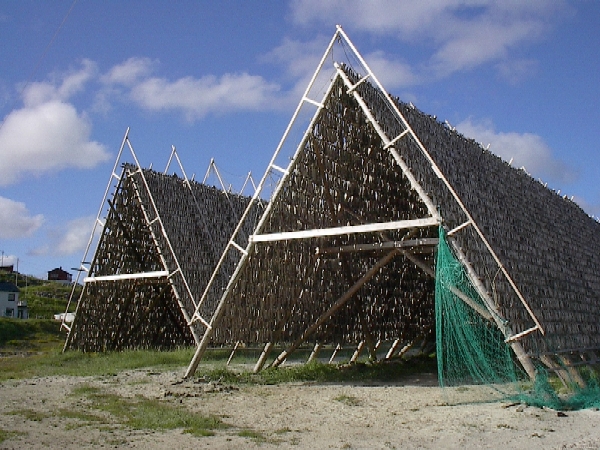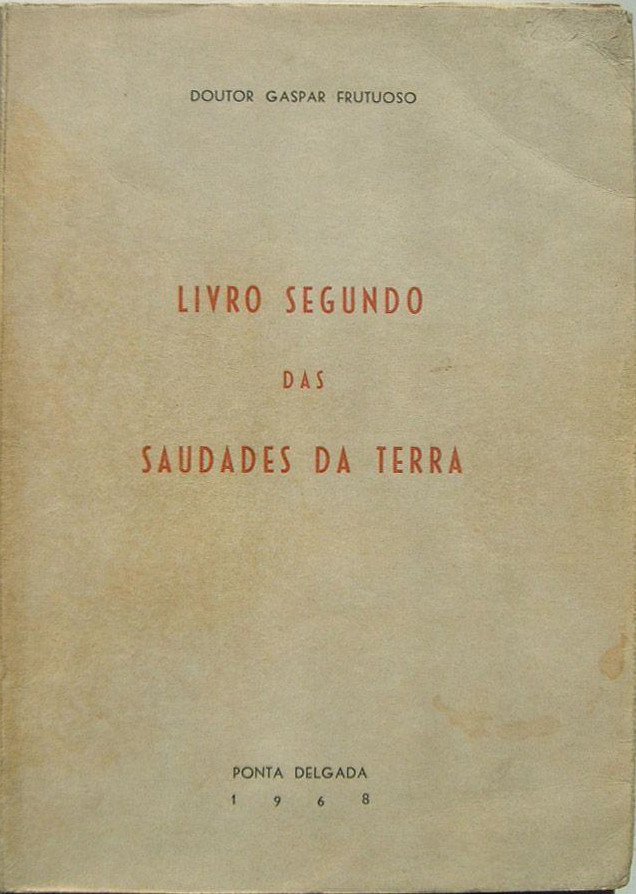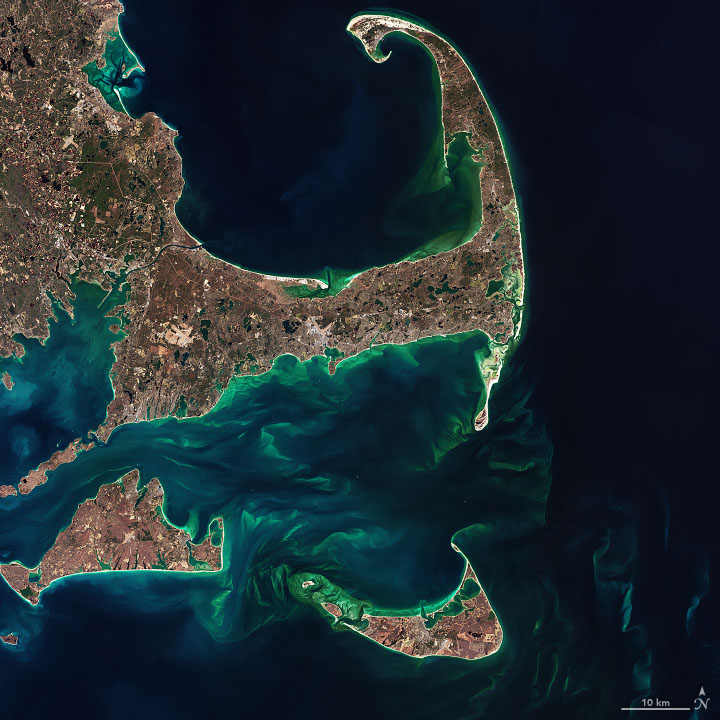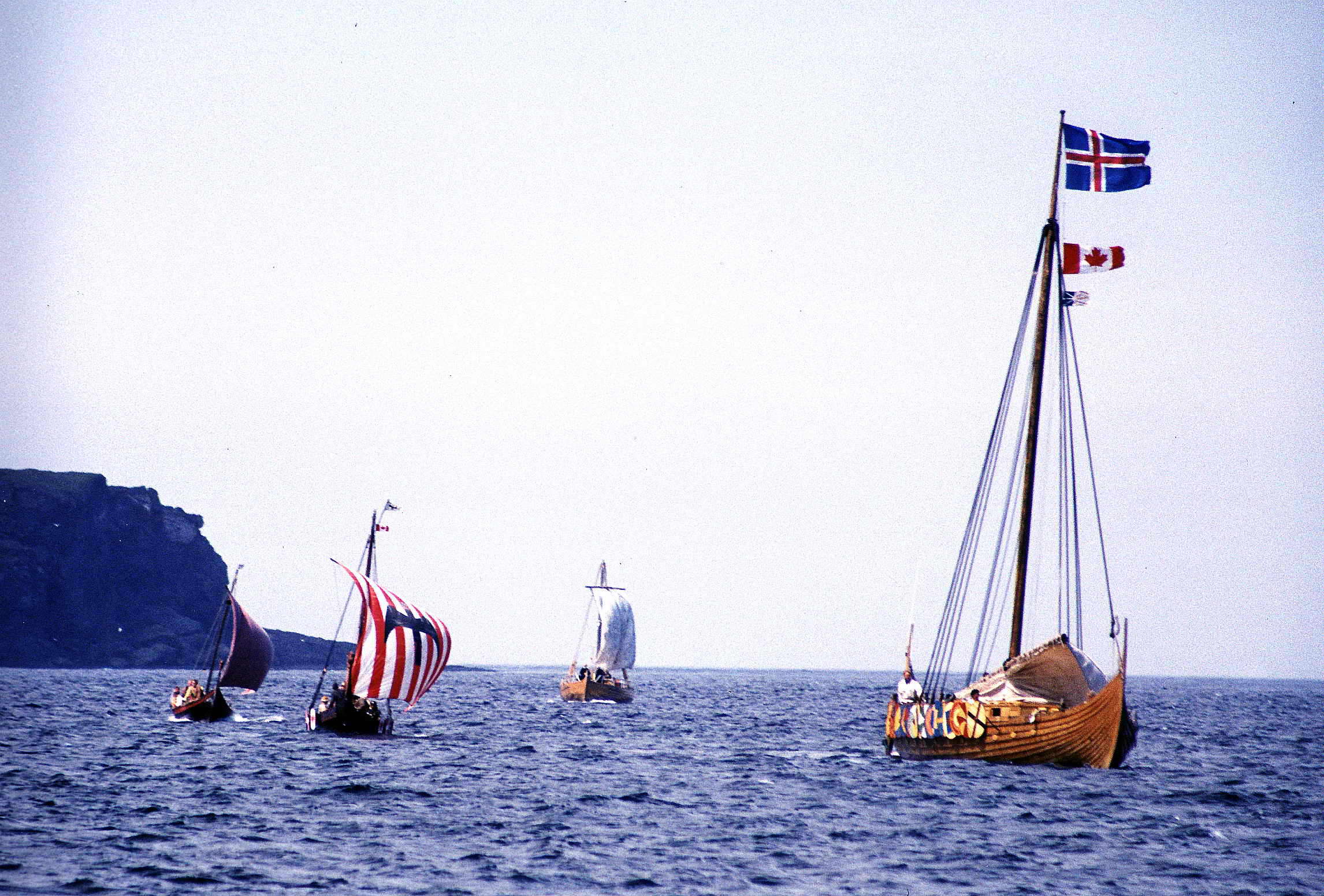|
Terra Nova Do Bacalhau
Bacalao, Bacallao, or Terra do Bacalhau was a phantom island depicted on several early 16th century Portuguese maps and nautical charts. The name first appears on a chart in 1508, but there are earlier accounts of Bacalao. The name is a variation of ''bacalhau,'' meaning "cod" or "stockfish". According to Gaspar Frutuoso in his work ''Saudades da Terra'', written in the 1570s, the Portuguese navigator João Vaz Corte-Real in 1472 was granted lands in the Azores by the king of Portugal, because of his discovery of the ''Terras do Bacalhau''. Historians do not consider the work of Frutuoso as very reliable, as it contains a great deal of misinformation.Diffie, Shafer, Winius, 1977, pp. 446–449 But, Bartolomé de las Casas also wrote about Portuguese voyages of discovery to ''Tierra de los Bacallao''. There has been speculation that Corte-Real reached the Americas a couple of decades before Columbus. Off the northeast tip of Newfoundland's Avalon Peninsula is an island named Bacala ... [...More Info...] [...Related Items...] OR: [Wikipedia] [Google] [Baidu] |
Phantom Island
A phantom island is a purported island which was included on maps for a period of time, but was later found not to exist. They usually originate from the reports of early sailors exploring new regions, and are commonly the result of navigational errors, mistaken observations, unverified misinformation, or deliberate fabrication. Some have remained on maps for centuries before being "un-discovered." Unlike lost lands, which are claimed (or known) to have once existed but to have been swallowed by the sea or otherwise destroyed, a phantom island is one that is claimed to exist contemporaneously, but later found not to have existed in the first place (or found not to be an island, as with the Island of California). Examples Some may have been purely mythical, such as the Isle of Demons near Newfoundland, which may have been based on local legends of a haunted island. The far-northern island of Thule was reported to exist by 4th century BCE Greek explorer Pytheas, but informati ... [...More Info...] [...Related Items...] OR: [Wikipedia] [Google] [Baidu] |
Stockfish
Stockfish is unsalted fish, especially cod, dried by cold air and wind on wooden racks (which are called "hjell" in Norway) on the foreshore. The drying of food is the world's oldest known preservation method, and dried fish has a storage life of several years. The method is cheap and effective in suitable climates; the work can be done by the fisherman and family, and the resulting product is easily transported to market. Over the centuries, several variants of dried fish have evolved. The ''stockfish'' (fresh dried, not salted) category is often mistaken for the ''clipfish'', or salted cod, category where the fish is salted before drying. Salting was not economically feasible until the 17th century, when cheap salt from southern Europe became available to the maritime nations of northern Europe. Stockfish is cured in a process called fermentation where cold-adapted bacteria matures the fish, similar to the maturing process of cheese. In English legal records of the Medi ... [...More Info...] [...Related Items...] OR: [Wikipedia] [Google] [Baidu] |
Gaspar Frutuoso
Gaspar Frutuoso (c.1522 in Ponta Delgada – 1591 in Ribeira Grande) was a Portuguese priest, historian and humanist from the island of São Miguel, in the Portuguese archipelago of the Azores. His major contribution to Portuguese history was his detailed descriptions of the history and geography of the Azores, Madeira, Canary Islands and references to Cape Verde, which he published in his six-part tome ''Saudades da Terra'', as well as ''Saudades do Céu''. He is normally cited in settlement history of the islands of the Azores. Biography Gaspar Frutuoso was born in 1522,José Luís Brandão da Luz (1996), p. 475 on the island of São Miguel, son of Frutuoso Dias, a merchant and rural property-owner, and his wife Isabel Fernandes. Little is known of his childhood, apart from references to him working his father's lands during this period. The first trustworthy record about Frutuoso was his admission to the University of Salamanca (in 1548) where he later obtained an Arts certi ... [...More Info...] [...Related Items...] OR: [Wikipedia] [Google] [Baidu] |
João Vaz Corte-Real
João Vaz Corte-Real (; c. 1420 – 1496) was a Portuguese sailor, claimed by some accounts to have been an explorer of a land called ''Terra Nova do Bacalhau'' (''New Land of the Codfish''), speculated to possibly have been a part of North America. For his efforts, Corte-Real was offered the Donatário- Captaincies of São Jorge and Angra, respectively. Biography A member of the Corte-Real family, João Vaz was the father of Miguel and Gaspar Corte-Real, who some claim accompanied him on his voyage. Fragmentary evidence suggests the expedition in 1473 was a joint venture between the kings of Portugal and Denmark, and that Corte-Real accompanied the German sailors Didrik Pining and Hans Pothorst, as well as (the possibly mythical) John Scolvus. The claim that he discovered ''Terra Nova do Bacalhau'' (literally, ''New Land of the Codfish'') originated from Gaspar Frutuoso's book ''Saudades de terra'' from around 1570-80. There is speculation that this otherwise unidentified isle ... [...More Info...] [...Related Items...] OR: [Wikipedia] [Google] [Baidu] |
Azores
) , motto =( en, "Rather die free than subjected in peace") , anthem= ( en, "Anthem of the Azores") , image_map=Locator_map_of_Azores_in_EU.svg , map_alt=Location of the Azores within the European Union , map_caption=Location of the Azores within the European Union , subdivision_type=Sovereign state , subdivision_name=Portugal , established_title=Settlement , established_date=1432 , established_title3=Autonomous status , established_date3=30 April 1976 , official_languages=Portuguese , demonym= ( en, Azorean) , capital_type= Capitals , capital = Ponta Delgada (executive) Angra do Heroísmo (judicial) Horta (legislative) , largest_city = Ponta Delgada , government_type=Autonomous Region , leader_title1=Representative of the Republic , leader_name1=Pedro Manuel dos Reis Alves Catarino , leader_title2= President of the Legislative Assembly , leader_name2= Luís Garcia , leader_title3= President of the Regional Government , leader_name3=José Manuel Bolieiro , le ... [...More Info...] [...Related Items...] OR: [Wikipedia] [Google] [Baidu] |
Bartolomé De Las Casas
Bartolomé de las Casas, OP ( ; ; 11 November 1484 – 18 July 1566) was a 16th-century Spanish landowner, friar, priest, and bishop, famed as a historian and social reformer. He arrived in Hispaniola as a layman then became a Dominican friar and priest. He was appointed as the first resident Bishop of Chiapas, and the first officially appointed "Protector of the Indians". His extensive writings, the most famous being ''A Short Account of the Destruction of the Indies'' and ''Historia de Las Indias'', chronicle the first decades of colonization of the West Indies. He described the atrocities committed by the colonizers against the indigenous peoples. Arriving as one of the first Spanish (and European) settlers in the Americas, Las Casas initially participated in, but eventually felt compelled to oppose, the abuses committed by colonists against the Native Americans. As a result, in 1515 he gave up his Native American slaves and '' encomienda'', and advocated, before King Cha ... [...More Info...] [...Related Items...] OR: [Wikipedia] [Google] [Baidu] |
Avalon Peninsula
The Avalon Peninsula (french: Péninsule d'Avalon) is a large peninsula that makes up the southeast portion of the island of Newfoundland. It is in size. The peninsula is home to 270,348 people, about 52% of Newfoundland's population, according to the 2016 Canadian Census. The peninsula is the location of St. John's, the provincial capital and largest city. It is connected to the main section of the island by the wide Isthmus of Avalon. The peninsula protrudes into the rich fishing zones near the Grand Banks. Its four major bays ( Trinity Bay, Conception Bay, St. Mary's Bay and Placentia Bay) have long been the centre of Newfoundland's fishing industry. Geography and geology The Avalon Peninsula is pinched into smaller peninsulas formed by St. Mary's Bay and Conception Bay. St. John's is located in the northeast of the peninsula. The Avalon Peninsula is a noted region for Precambrian fossils, and many Lagerstätten of the diverse Ediacaran biota are found on the peninsul ... [...More Info...] [...Related Items...] OR: [Wikipedia] [Google] [Baidu] |
Baccalieu Island
Baccalieu Island or Bacalhoo Island () is a 5 km2 uninhabited island at the northern extremities of Conception Bay in Subdivision 1G, near the community of Red Head Cove, Newfoundland and Labrador, Canada. It is separated from the island of Newfoundland by Baccalieu Tickle, a small strait and an abundant fishing ground. The island has some trees but is mostly rocky. The name ''Baccalieu'' is derived either from the Portuguese ''bacalhau'', Spanish ''bacalao'' or the Basque ''baccalos'', all meaning "codfish". Early Portuguese maps dating before Columbus' voyage indicate an island west of the Azores named Terra do Bacalhau which may have been the whole island of Newfoundland. Modern Baccalieu Island was known to Europeans by that name since at least 1556, when it was drawn on the Gastaldi map as "Bacalaos". Ecological Reserve : Baccalieu Island is the largest seabird island in Newfoundland and supports the greatest diversity of breeding seabirds in eastern North America ... [...More Info...] [...Related Items...] OR: [Wikipedia] [Google] [Baidu] |
Brasil (mythical Island)
Brasil, also known as Hy-Brasil and several other variants, is a phantom island said to lie in the Atlantic Ocean west of Ireland. Irish myths described it as cloaked in mist except for one day every seven years, when it becomes visible but still cannot be reached. Etymology The etymology of the names ''Brasil'' and ''Hy-Brasil'' is unknown, but in Irish tradition it is thought to come from the Irish (meaning "descendants (i.e., clan) of Bresail"), one of the ancient clans of northeastern Ireland. cf. Old Irish: : island; : beauty, worth, great, mighty. Despite the similarity, the name of the country Brazil (Portuguese: ) has no connection to the mythical islands (although J. R. R. Tolkien's essay "On Fairy Stories" linked them). The South American country was at first named Ilha de Vera Cruz Ilha de Vera Cruz (, ) ( Portuguese for ''Island of the True Cross'') was the first name given by the Portuguese navigators to the on the northeast coast of what later became Bra ... [...More Info...] [...Related Items...] OR: [Wikipedia] [Google] [Baidu] |
Cape Cod
Cape Cod is a peninsula extending into the Atlantic Ocean from the southeastern corner of mainland Massachusetts, in the northeastern United States. Its historic, maritime character and ample beaches attract heavy tourism during the summer months. The name Cape Cod, coined in 1602 by Bartholomew Gosnold, is the ninth oldest English place-name in the U.S. As defined by the Cape Cod Commission's enabling legislation, Cape Cod is conterminous with Barnstable County, Massachusetts. It extends from Provincetown in the northeast to Woods Hole in the southwest, and is bordered by Plymouth to the northwest. The Cape is divided into fifteen towns, several of which are in turn made up of multiple named villages. Cape Cod forms the southern boundary of the Gulf of Maine, which extends north-eastward to Nova Scotia. Since 1914, most of Cape Cod has been separated from the mainland by the Cape Cod Canal. The canal cuts roughly across the base of the peninsula, though small portions of the ... [...More Info...] [...Related Items...] OR: [Wikipedia] [Google] [Baidu] |
Pre-Columbian Transoceanic Contact Theories
Pre-Columbian transoceanic contact theories are speculative theories which propose that possible visits to the Americas, possible interactions with the indigenous peoples of the Americas, or both, were made by people from Africa, Asia, Europe, or Oceania prior to Christopher Columbus's first voyage to the Caribbean in 1492 (i.e., during any part of the pre-Columbian era). Studies between 2004 and 2009 suggest the possibility that the earliest human migrations to the Americas may have been made by boat from Beringia and travel down the Pacific coast, contemporary with and possibly predating land migrations over the Beringia land bridge, which during the glacial period joined what today are Siberia and Alaska. Whether transoceanic travel occurred during the historic period, resulting in pre-Columbian contact between the settled American peoples and voyagers from other continents, is vigorously debated. Only a few cases of pre-Columbian contact are widely accepted by mainstream ... [...More Info...] [...Related Items...] OR: [Wikipedia] [Google] [Baidu] |
Sacred Cod
The Sacred Cod is a carved-wood effigy of an Atlantic codfish, "painted to the life", hanging in the House of Representatives chamber of Boston's Massachusetts State House"a memorial of the importance of the Cod-Fishery to the welfare of this Commonwealth" (i.e. Massachusetts, of which cod is officially the "historic and continuing symbol"). The Sacred Cod has gone through as many as three incarnations over three centuries: the first (if it really existedthe authoritative source calling it a "prehistoric creature of tradition") was lost in a 1747 fire; the second disappeared during the American Revolution; and the third, installed in 1784, is the one seen in the House chamber today. "Sacred Cod" is not a formal name but a nickname which appeared in 1895, soon after the carving was termed "the sacred emblem" by a House committee appointed "to investigate the significance of the emblem hichhas kept its place under all administrations, and has looked upon outgoing and incoming leg ... [...More Info...] [...Related Items...] OR: [Wikipedia] [Google] [Baidu] |



_(cropped).jpg)


